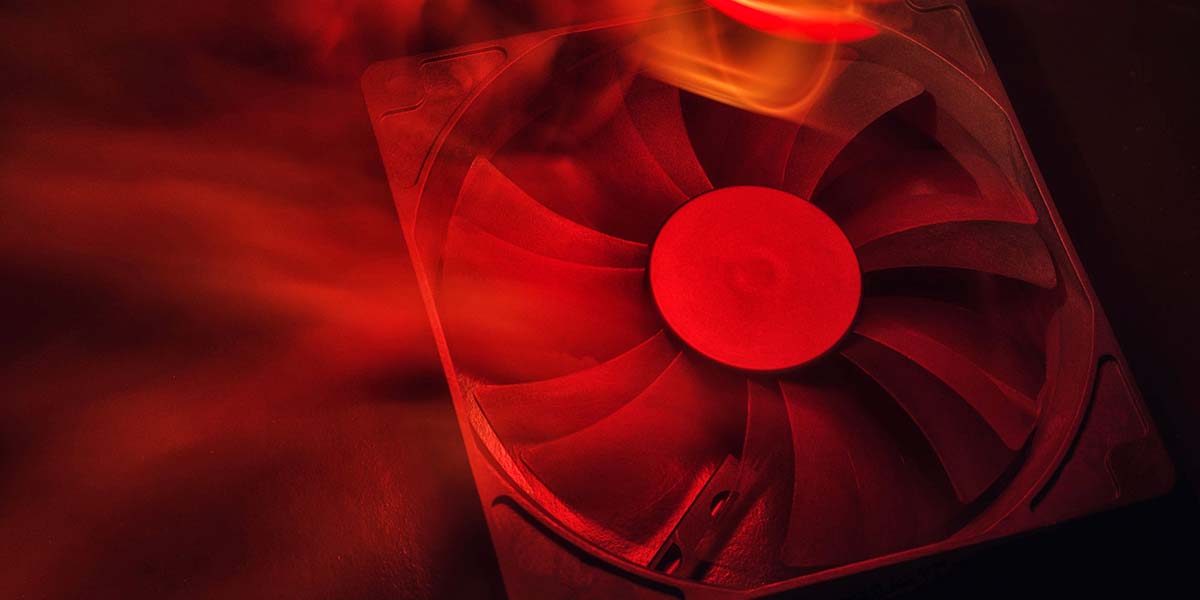A mushroom cloud of white smoke emerged accompanied by an assortment of hissing, arcing, and bubbling sound effects. It was a really bad day for my hard-working Drake L7 amplifier, or as my fellow technical author and ham radio friend Eric Nichols KL7AJ quipped, “If this happened at the Vatican, everyone would know that we had a new Pope.”
When the smoke had (literally) cleared, it was immediately apparent that the root cause was the explosive disintegration of the blade assembly that formerly had been clamped to the motorized hub of the primary cooling fan. The centripetal force violently threw bits and pieces of the plastic blades onto an assortment of chokes, coils, high voltage wiring, and two very abused Eimac 3-500Z tubes.
With the amplifier now pulled from service, the next lengthy and painstaking procedure was to remove the melted black plastic slag from every accessible location. An assortment of dental tools was a great help with cleaning out most of the shrapnel, but the only safe technique for removing coagulated plastic lava from the large Eimac tubes was to use soft Teflon-coated kitchen scrubbers.
As you can see in the accompanying photographs, the high voltage wiring was reduced to a gooey mess at numerous locations with accompanying burn spots on the amplifier’s metal components from the multiple flashover events.
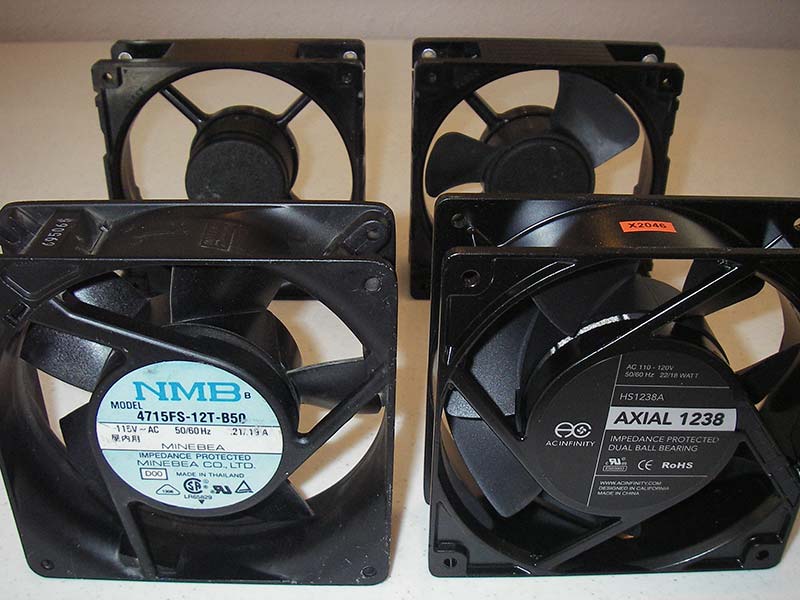
The rogues gallery. Back left: Original Drake L7 fan minus the exploded blade hub. Back right: Duplicate NOS three-bladed Drake fan. Front right: AC Infinity Axial 1238 seven-bladed professional sound studio fan. Front left: NMB reverse pitch five-bladed fan from Thailand — the final winner.
A day for the painstaking cleanup process was followed by another full day to replace all the damaged wiring. This consisted of soldering in new old stock Belden 8898 10KV insulated 14AWG wire manufactured in February 1958 and provided by Foster Paulis W4HCX from his extensive stock of OEM electronic components in Pahrump, NV.
Now it was time to decide what sort of replacement fan to install for the Drake unit made back in the day. Since the original fan had destroyed itself after a mere half-century of service, I wanted to run some pre-installation tests on several candidate fans before selecting a suitable replacement.
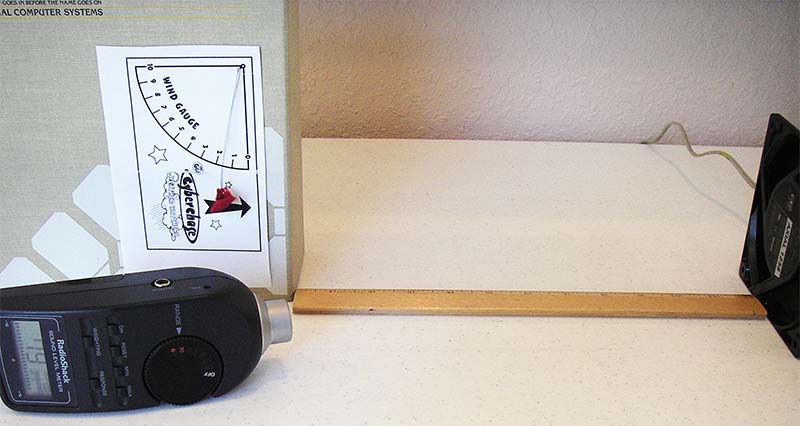
Fan test jig showing the AC Infinity fan registering 79 dBA downstream noise while producing 1.6 units of air pressure at a standardized one foot sensor distance from the air source.
The finalists consisted of two fans offered by Jon Schumacher K1NV from the restoration parts storage racks of his spacious early audio and ham radio display facility; another brand was recommended by professional audio systems designer Peter More WA6LBY.
In the photo of the four fans, you can see the bladeless original alongside a nearly identical three-bladed replacement. In front is the five-bladed NMB candidate from K1NV and the seven-bladed AC Infinity model recommended by WA6LBY.
My challenge was to set up a standardized testing station to evaluate the CFM output of each candidate fan, while simultaneously measuring the noise produced in the direction of the exhaust.
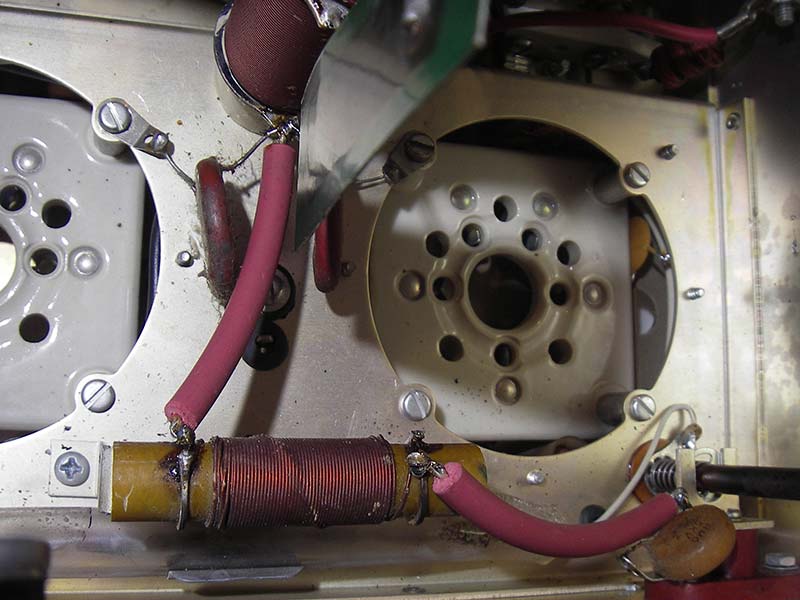
All cleaned up after the explosion and the meltdown. Two days of work removing formerly molten black slag and melted wiring, now replaced with 1958 vintage Belden 8898 10KV high voltage wire.
Thanks to our educational friends at PBS (https://cms-tc.pbskids.org/parents/crafts-experiments/Cyberchase-Make-a-Wind-Gauge.pdf?mtime=20190429095941), I assembled a tabletop anemometer that I combined with a hamfest flea market RadioShack model 33-2050 sound level meter to make simultaneous wind speed and dBA readings at a standard one foot distance from the test subjects. This is where things began to get interesting.
For starters, muffin fans apparently subscribe to the philosophy of Aristotle Onassis in that, “The only rule is that there are no rules.”
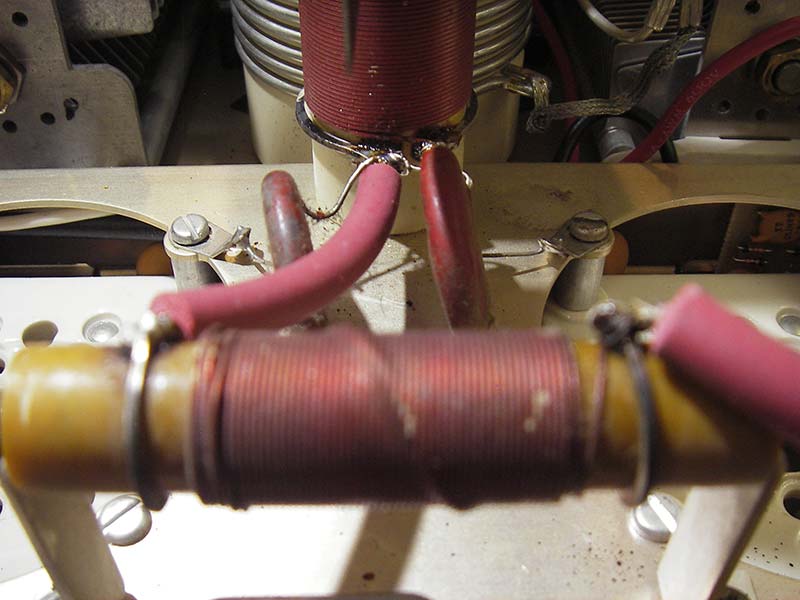
Following hours of picking with dental tools, the solidified black slag from the fan blade meltdown was removed from HV chokes RFC 4 and RFC 5 as shown here.
I had fans that rotated clockwise and counterclockwise, blades with opposite pitches, and supporting frameworks on either the inlet or exhaust sides. The random disparity was somewhat distressing to my aircrew and engineering friends who firmly believe in standardization, but the neighborhood Scouts who helped with the tests thought this was fascinating.
One future ham wanted to know if the “fan from Thailand” (see the NMB nameplate) rotated in the opposite direction because it had been manufactured in the Southern Hemisphere. I patiently explained fan rotation had little if anything to do with Coriolis forces, and that Bart Simpson notwithstanding, flushing toilets don’t rotate in the opposite direction in Australia (https://youtu.be/OnB4qMT5R_Y).
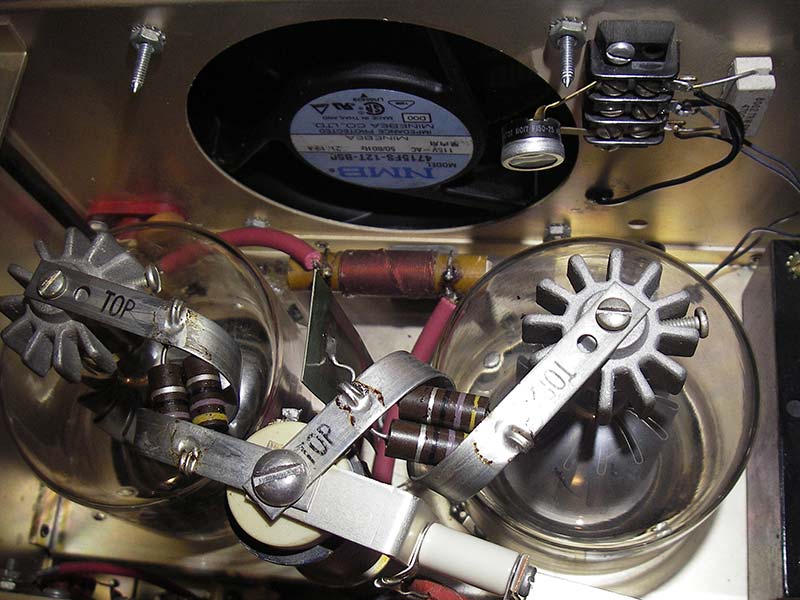
Besides having the best scores in both airflow and noise output, the NMB fan from Thailand (top) featured reverse airflow which meant that the support struts were on the interior side of the fan, theoretically blocking shrapnel (from any future explosion) from entering the L7’s PA compartment.
Not to mention that Thailand is located (barely) in the Northern Hemisphere. I guess she’ll figure out where E2 is located when she starts working on her DXCC.
The runner-up was the AC Infinity model with 1.6 units of wind force and 79 dBA sound output, while Thailand took the gold with 2.6 blowing units and 77 dBA of background noise.
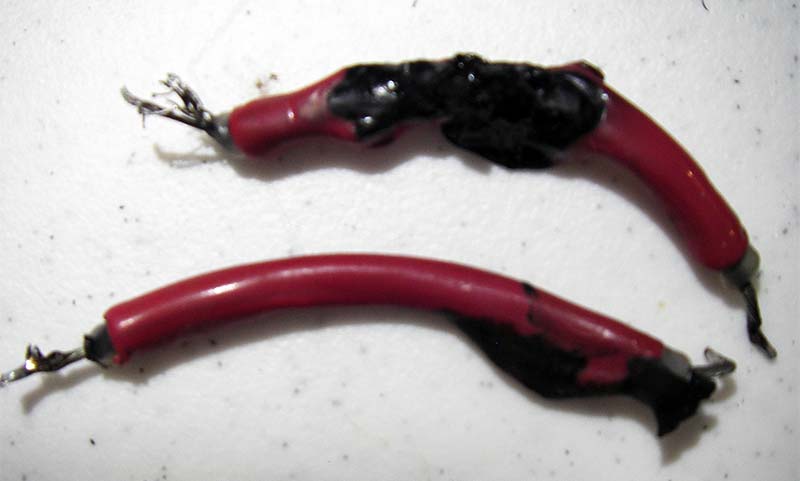
A close-up view of two destroyed sections of the original HV wiring showing the compromised insulation and spatter from the molten black slag that was produced by the disintegration of the original fan blades onto the overheated 3-500Z PA tubes.
Not only that, because of the NMB’s inlet side support structure, I preferred having its framework blocking the L7’s interior from another potentially explosive fan disassembly at some point in the distant future.
After one more day spent wiring the new fan into the amp’s control circuitry and reassembing all the freshly de-slagged components, the L7 amplifier promptly went back into service alongside my Drake TR-7 transceiver. The very gratifying conclusion was a series of 20 meter QSOs using my version of the 270’ OCF dipole recently designed by Bob Rose KC1DSQ and Bob Glorioso W1IS (https://batteryeliminatorstore.com/blogs/ocf-masters-articles/a-new-design-of-a-40-6-meter-off-center-fed-dipole).
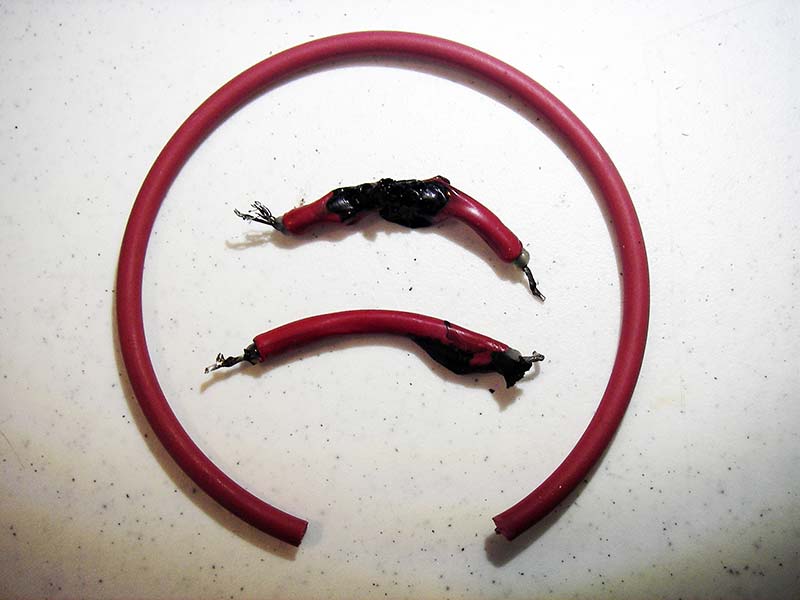
A comparison between the original heavily damaged HV wiring and a section of NOS Belden 8898 HV cable date stamped February 1958, which was used in the repair and restoration of the Drake L7 amplifier.
These contacts were made with an assortment of VK2s, VK3s, and VK7s with a minimum reported S meter reading of S9 plus 10 dB as compared to an average S7 report when operating the TR-7 barefoot.
Also, I’m pleased to report that none of the Australians reported experiencing any Coriolis force issues with their ham shack plumbing arrangements. NV

